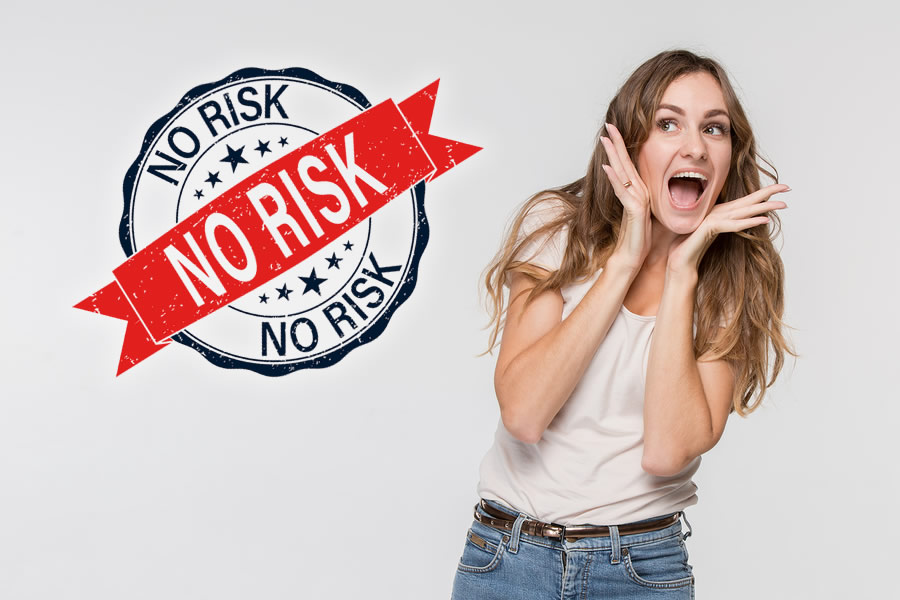
Are you risk-averse? If trying something new gives you butterflies in your stomach and stops you in your tracks, you’re likely risk-averse. Many fundraiser’s are.
Some people have an immediate and negative reaction to trying new things. And sometimes, their cautious natures are warranted.
But often they’re not.
So when Seth Godin pointed out the foolishness of being afraid of kohlrabi — a bulbous vegetable — I decided to buy one.
The reality is that I love farmer’s markets, but I generally buy the same old things. Trying Kohlrabi turned out to be easy AND delicious — I simply roasted it with a little EVOO and salt and pepper. Not really risky at all!
On the downside, if I had hated it, I’d have spent a couple of bucks, had a new experience and learned that kohlrabi just isn’t for me.
3 Fundraising “Non-Risks” that You Should Take More Often
Taking risks on something new is often worthwhile, particularly if the downside of the risks are small. In fact, if you really want to raise major gifts (or any money) these are three non-risks you should be taking regularly.
1. Pick up the phone (and call a donor).
- Downside Risk: You feel foolish because they hang up on you.
- Upside Reward: They are delighted to hear from you and seriously appreciate your call.
- Reality: You’ll most likely leave a message.
2. Go for a walk (with a donor or prospect).
- Downside Risk: They say no, and your ego is slightly bruised.
- Upside Reward: You make a new friend and get a little more practice socializing with someone you don’t know well — that’s always helpful, as a fundraiser.
- Reality: It’s unlikely that someone will say a flat out no, although they may suggest an alternate activity if walking isn’t their thing.
3. Ask a donor for money.
- Downside Risk: The donor gets angry and stops giving.
- Upside Reward: They say yes and increase their gift.
- Reality: It’s unusual for someone to become so upset that they stop giving. It’s much more likely that they’ll increase their gift, especially if you present a compelling case for support.
These are all “non-risk” risks that you should be taking much more often — even daily. If you’re not, it’s time to really consider what’s stopping you. (If you say “time,” that’s just an excuse. We’ll deal with that in another post.)
A Worthwhile Risk for If You’re Considering a Capital Campaign
Here’s another risk that’s probably worth taking…
Try out the Capital Campaign Toolkit for your campaign in lieu of working with a consultant.
- Downside Risk: A small, one-month investment, which is a tiny fraction of the amount you’ll be raising in your campaign. (You can cancel your Toolkit plan at any time.)
- Upside Reward: A successful capital campaign with you in the driver’s seat! You’ll be in control of your campaign, with the confidence to know exactly what comes next and what to expect, as well as having access to campaign advisors who are available to help guide you through your campaign, as well as answer any questions you have.
- Reality: There’s no minimum commitment to trying the Toolkit, so it’s practically risk-free and all reward.
A Final Word on Taking Risks in Fundraising
Often, it’s worth taking a risk on trying something new — particularly if the downside of making a mistake is quite low. When you take a risk to try something different, you open yourself up to new ideas and new possibilities. You’re no longer the hamster on the wheel, spinning around and around with no end in sight.
So pick up the phone and reach out to a donor today. If that thought makes you nervous, good. Just do it, and reap those rewards! 😉

This was a great article! As someone who is risk-averse, I typically try to avoid anything that places me out of my comfort zone. Fundraising as a whole is out of my comfort zone due to the main task being to ask others for their money. This helped me lay out a way of thinking about negative, positive, and realistic options instead of solely focusing on the negative worst case scenario!